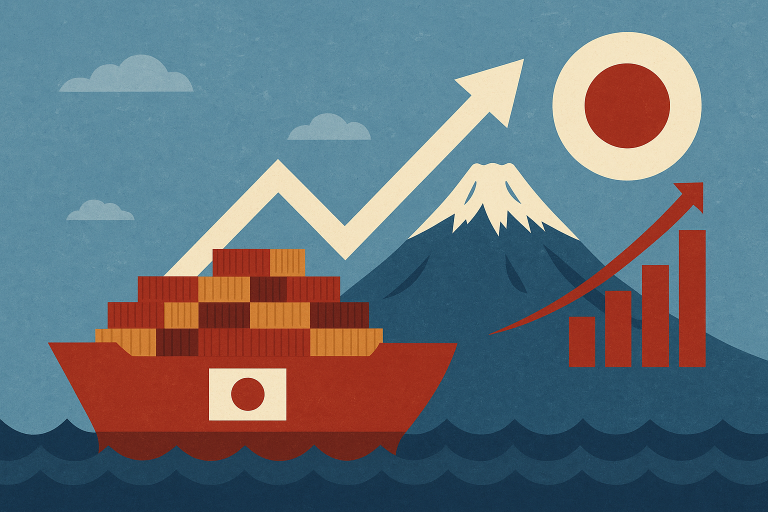Japan’s export sector showed renewed strength in September, according to data released just a day after the historic appointment of Sanae Takaichi as the nation’s first female prime minister.
The rebound, which saw exports rise 4.2%, was driven by a powerful surge in demand from Asia that successfully offset the continued weakness in trade with the United States, a sign of resilience in the region’s economic ties amid shifting global trade policies.
The data, released by Japan’s Ministry of Finance on Wednesday, adds a crucial economic dimension to the country’s new political landscape, providing an early test for an incoming leader who has pledged to prioritise economic growth.
Asian markets lift Japan’s trade performance
Japan’s exports to Asia climbed 9.2% in September compared to a year earlier, helping to counterbalance the ongoing weakness in shipments to the US, which fell 13.3%.
Exports to China, Japan’s largest trading partner, increased by 5.8%, highlighting steady industrial demand and cross-regional supply chain recovery.
Despite global headwinds, Asia’s continued appetite for Japanese products, from machinery and components to consumer goods, has been key to stabilising the nation’s trade balance.
In contrast, exports to the US have now declined for six consecutive months, largely due to tariffs targeting key Japanese industries, including automotive.
Meanwhile, auto shipments to the US tumbled 24.2% in September, reflecting the pressure on major carmakers such as Toyota Motor Corp., which play a central role in Japan’s industrial output.
Imports climb as regional supply chains deepen
Japan’s imports grew 3.3% in September with a 6% rise in trade across Asia. Imports from China, which account for a significant share of Japan’s consumer and manufacturing inputs, rose 9.8%.
This steady growth points to the continued strength of intra-Asian supply chains despite global trade disruptions.
Rising import figures also signal the gradual recovery of domestic consumption and industrial activity, underpinned by stable manufacturing orders and a weaker yen.
However, the reliance on imported goods and energy continues to challenge Japan’s trade surplus ambitions, especially as global prices fluctuate and domestic inflation remains moderate.
Takaichi’s appointment brings policy shift hopes
The trade data arrived a day after Sanae Takaichi was chosen in a parliamentary vote as Japan’s new prime minister, marking a milestone for gender representation in Japanese politics.
Known for her conservative leanings and support for expansive fiscal policy, Takaichi has pledged to prioritise economic growth, higher wages, and continued monetary easing.
Her stance on maintaining a weak yen aligns with export-driven interests as it boosts the value of overseas earnings for Japanese companies when converted back into yen.
Markets in Tokyo responded positively to her leadership announcement, with share prices rising amid expectations of higher government spending.
However, Takaichi’s ambitions face institutional constraints. Despite leading the ruling Liberal Democratic Party, her coalition does not hold a majority in either house of parliament, leaving her reform agenda vulnerable to political gridlock.
Divisions within her own party further complicate her ability to implement structural and fiscal reforms.
Long-term trade challenges remain
Japan’s trade relationship with the US continues to be strained by tariff-related barriers and policy disagreements dating back to earlier negotiations, during which Japan had agreed to invest $550 billion into the US economy and open its market to American automobiles and rice.
The recent 15% tariff rate on imported Japanese goods, while lower than the initially proposed 25%, still affects exporters dependent on US demand.
As global trade patterns evolve, Japan’s pivot toward Asia underscores a broader realignment of regional economic priorities.
With China remaining a key export destination and emerging Asian economies deepening ties with Tokyo, Japan’s future growth may depend more on its regional partnerships than on trans-Pacific trade.
The September figures highlight that Japan’s export recovery is being driven by regional demand rather than traditional Western markets.
As Takaichi works to consolidate her leadership and navigate internal political divisions, the country’s ability to balance its foreign policy, currency management, and trade diversification will define its next chapter of economic stability.
The post Japan’s exports to US fall 13.3%, but surge in Asia trade drives overall growth appeared first on Invezz

